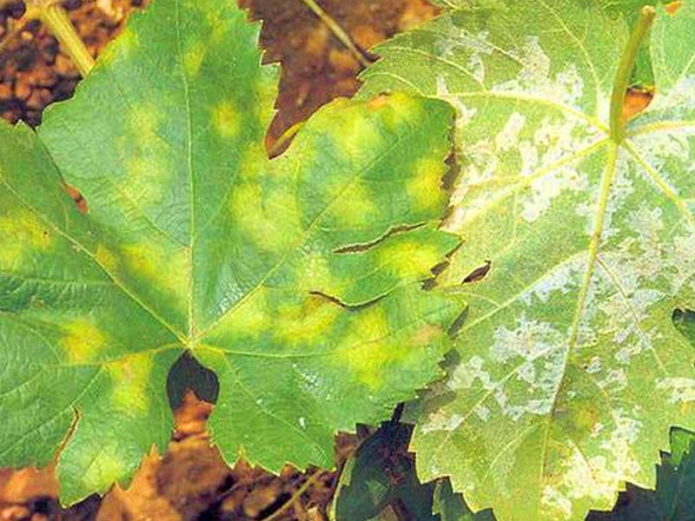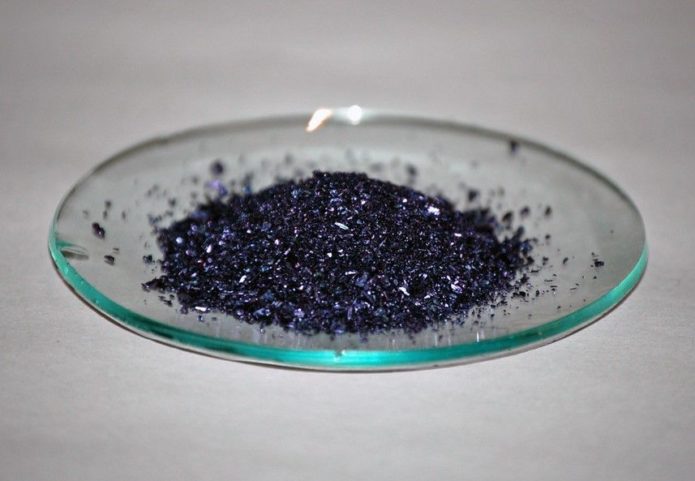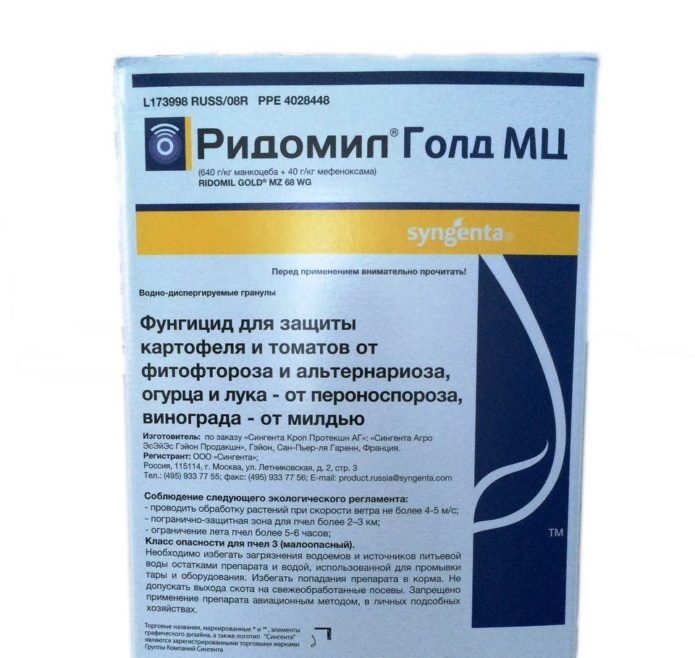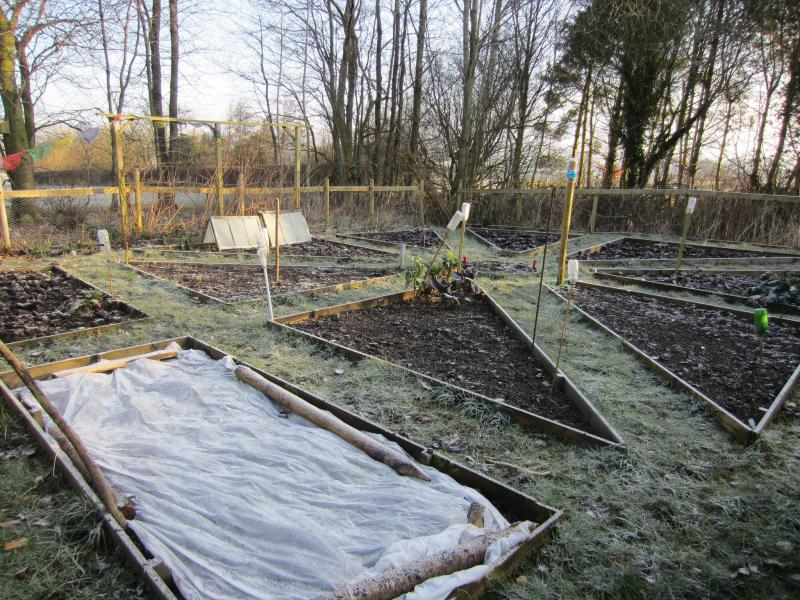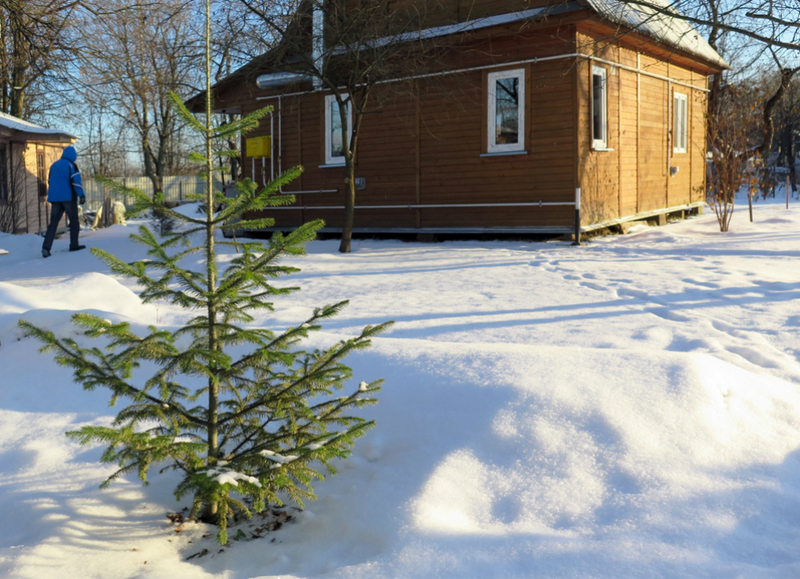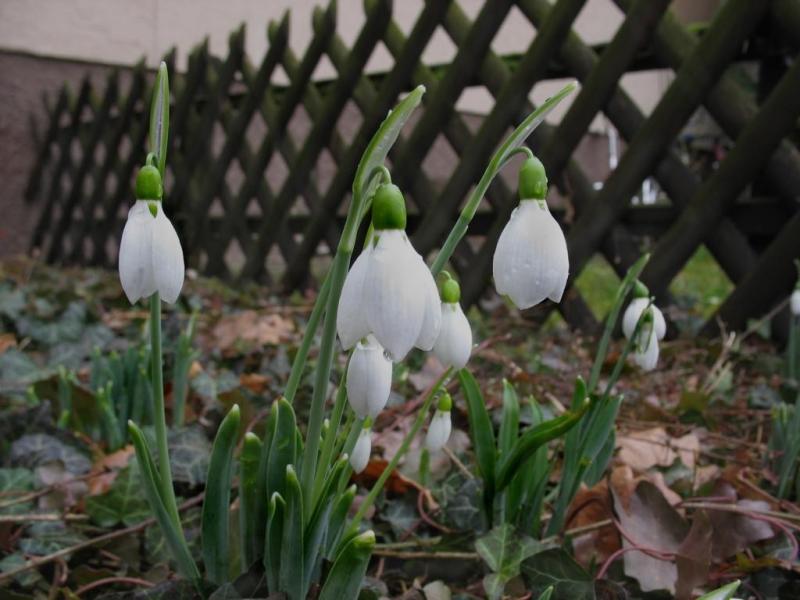Grapes are now planted not only in the south, it has long been no wonder in the middle lane and even in the north. It is necessary to take care of him constantly; if grown improperly, he easily becomes ill or is exposed to pests. One of the measures to prevent these troubles is the timely treatment with chemicals.
Content
The importance of proper processing of grapes at different times
As with human health, disease in a garden or vineyard is easier to prevent than cure. But for this you need to have an idea of what threatens plant health.
Major diseases of grapes
Experts know about the existence of several hundred different diseases of grapes of various nature. The most common are gray mold, mildew, black spot, oidium, and anthracnose.
Gray rot is a fungal disease that affects all parts of the bush, with the exception of perennial wood. The most dangerous gray rot is when it settles in bunches. Severely affected bunches become completely unusable. To fight the disease, first of all, preventive measures should be taken: timely remove fallen leaves from the vineyard, do it correctly autumn pruning of grapes, avoiding thickening of the bushes, brighten the ripening berries as much as possible by breaking out excess shoots and stepsons. In the event of a disease, it is necessary to use fungicides.

Gray rot in some years can ruin the entire crop, and even individual damaged berries in a bunch will ruin its appearance
Mildew is the most dangerous of diseases, affecting all parts of the plant. Especially dangerous with mildew in rainy years. If the necessary measures are not taken, the crop can be completely lost. The disease begins with the appearance of oily spots on the leaves, then a white bloom forms on all parts of the bush. Eventually, all affected areas will rot or dry out. Prevention of the disease consists in proper agricultural practices and the use of modern grape varieties with increased resistance to mildew. Chemical prophylaxis consists in spraying with a 1-2% solution of Bordeaux liquid in different phases of the development of the bush. On particularly unstable varieties, spraying has to be repeated many times until August. Instead of Bordeaux liquid, you can use other, more modern means.
Black spot is a fungus that affects all parts of the bushes: both green and lignified, manifests itself in early summer.Sometimes ripe berries are also affected, which acquire a dark purple color and become slightly edible. If the fungus penetrates deep into the tissue of the vineyard, the sleeves may die completely. Chemical preparations are ineffective, only timely surgical intervention helps.
Oidium, or powdery mildew, appears as a bloom of ashy color on all green parts of the bush: shoots, leaves, and especially berries. Unlike mildew, the development of this disease has nothing to do with high humidity.
The progression of the disease is facilitated by the thickening of the bush, which does not allow it to be well ventilated.
Thus, in this case, too, the main preventive measure is the timely competent pruning of the bush, as well as the constant summer cutting of excess green shoots and stepchildren. Measures to combat an already arisen disease - spraying with sulfur preparations or their mixture with Bordeaux liquid, and in cool weather - with a 0.2% potassium permanganate solution. There are also more modern remedies for this disease.
Anthracnose does not touch only old shoots, manifesting itself as light brown spots, with the growth of which the affected areas of young tissues die. Control measures are the same as in the case of mildew.
How to protect grapes from diseases and pests, preparations for processing and their differences:https://flowers.bigbadmole.com/en/yagody/vinograd/obrabotka-vinograda-osenyu.html
Grape pests
The most dangerous pests of grapes include phylloxera, marble beetles, skosari, grape mottles and bunches.
Phyloxera is a small aphid-like insect that lives shallow in the soil, feeds on juices from grape roots. Bacteria and fungi settle on the roots damaged by phylloxera, which ultimately lead to the death of the most active small roots.
Phyloxera is famous for its high fertility; as a result of its actions, the bushes can die in a few years.
It is very difficult to fight an insect. Fortunately, in our time, many varieties of grapes have been developed that are resistant to the action of this pest.
Marble beetle is a brown spotted beetle up to 3 cm long. Its larvae in the fall are able to go into the soil to a depth of one and a half meters and damage grape roots of different thickness. They die during plowing and serious chemical treatment.
Crimean mowing beetle is a black shiny flightless beetle up to 1 cm long, hibernating in the soil. The larvae also live in the ground and significantly damage the roots. The Turkish skosar also causes similar harm. Control measures - thorough loosening of the soil, destruction of weeds, the use of special chemicals.
Grape mottled is a blue-green butterfly with gray spotted wings, in a span of more than 2 cm. The main harm is caused by caterpillars: in early spring, they gnaw the buds, and in summer, and leaves. Their abundant reproduction is facilitated by high humidity, which can be fought with proper care. They destroy the butterfly and caterpillars by spraying with various preparations, for example, Decis.

This cute butterfly itself is capable of doing a lot of troubles, but its caterpillars are especially dangerous.
The bunchy leafworm is a butterfly with a wingspan of up to 13 mm. Caterpillar of the same size, olive green. Caterpillars of various generations feed on both buds and berries. Varieties resistant to leafworm have not been bred, but varieties with not very dense inflorescences are minimally damaged. Control measures are the same as with motley.
Thus, the main thing in the prevention of diseases on grapes is the timely and correct implementation of the basic agrotechnical techniques. This is moderate watering, sufficient and systematic feeding, tying vines and, most importantly, qualified pruning.
Pruning should be carried out in conjunction with constant, throughout the summer, "green operations" aimed at maximum clarification and ventilation of the bushes.
In this case, preventive spraying can be carried out infrequently and not for all grape varieties, but if the disease still affects the bushes, you cannot do without chemicals. At the same time, it is very important to make the right choice of an effective remedy in accordance with the identified disease, as well as to correctly maintain the processing time.
When choosing a drug for the treatment of grapes, remember that they are divided into fungicides and insecticides. Fight against fungi using fungicides, insects - insecticides. Chemicals used in horticulture for other purposes are not covered here.
In order for the fight against diseases and pests of grapes to be most effective, you need to be able to recognize the symptoms and correctly select the necessary means of treatment:https://flowers.bigbadmole.com/en/yagody/vinograd/bolezni-vinograda-opisanie-s-fotografiyami-i-sposobyi-lecheniya.html
Video: the main hazards for the grape plant
Terms of processing grapes from diseases and pests
It is difficult to come up with a single grape treatment plan that is suitable for all situations. Indeed, in different regions of our country, not only the climate is very different, which affects the growing season of plants: somewhere the grapes are already blooming with might and main, and somewhere they are only being raised on trellises. In addition, the climate also affects the prevalence of certain diseases or insects in each specific area. Therefore, the approximate work schedule, which we will try to draw up here, must be edited independently, observing the development of the vine. And on the basis of such observations, over the course of several years, it will be possible to draw up an optimal table for yourself, including the timing of spraying the vineyard and preparations for it.
It is necessary to start the chemical treatment of grapes from pests and diseases after all the mechanical preparatory work has been completed, and a lot of them have to be done.
This is the release of bushes from winter shelter, and the first tie of the main vines to the lower wire for ventilation, and early spring fertilization in shallow grooves, and garbage collection around the bushes with subsequent loosening of the soil.
Usually, in early spring, vineyards are sprayed only for preventive purposes. Spring chemical treatment of bushes involves the use of such means that can quickly destroy awakened pests, as well as protect plants from emerging diseases. Instead of strong chemicals at this time, it is advisable to use agents that do not pose a danger to the surrounding plants and various animals in the abundance of those in the garden plots: both mammals and beneficial insects. All parts of plants, as well as tree trunks, are treated. So, let's try to present a very approximate monthly plan for combating diseases and pests of grapes.
Vineyard processing schedule, including spring
Winter is a time when not every citizen can get out into the garden. It's a pity, of course, because there is work in the vineyard throughout the year. In particular, in winter it is necessary to add snow to the covered bushes. In terms of protection from disease, during the winter months you can only visit a couple of stores to replenish your household supplies. Chemicals, as a rule, have a limited shelf life, so it is worth buying fresh ones, especially from the list of the most popular ones: Bordeaux mixture, Nitrafen, Fastak, Quadris, Topaz, iron vitriol. It is not too late to do this in March.
- In April, active work begins in the vineyard. If sores visited the bushes last season, now is the time to try to get even with them. The beginning, middle or end of the month - depends on the climate of the region and the current weather. But as soon as it is possible to open the bushes from the winter shelter (the threat of severe frosts has passed), the bunches of vines must be fixed to the trellis in any convenient way for ventilation.Then with a brush, you can clean them of the remains of the earth and carry out "eradicating" spraying. This work can be done when the temperature is above 5 ° C. The most common drugs that destroy almost all pathogens at this time of year are Nitrafen and DNOC.
- In May, after the formation of several leaves on young shoots, the bushes should be sprayed with fungicides. But if no signs of oidium, anthracnose or black spot were noticed either in the last season or in the current one, this treatment can be omitted in most regions. If a grape mite appears before flowering (in the 9–10 leaf phase), the bushes should be treated with any available acaricide.
- In early or mid-June, just before flowering, the bushes should be treated with fungicides: the flowering period is the most risky time in terms of the appearance of diseases and pest attacks. Pesticide treatment during this time is undesirable. When the berries reach the size of peas, spraying with fungicides must be repeated.
- July is the month in which it is necessary to protect the grapes from fungal diseases. Spraying is carried out in dry weather, but not earlier than 3 weeks after the previous one. At this time, of the drugs that successfully fight against powdery mildew, Flint is the most effective. In case of rainy weather, it is safer to use Quadris, which also protects well from oidium.
- In August, the last processing of grapes from mildew and oidium is carried out on early varieties using Quadris. If the first signs of gray mold damage are noticed, preventive spraying with a solution of potassium permanganate (5–7 g per bucket of water) should be carried out immediately.
- In September, the same work is carried out as in August, on grapes of later ripening dates. If on the bushes where the crop has already been harvested, signs of oidium appear, you can treat it with Flint or Strobi. Bushes with a harvest with these preparations cannot be processed; solutions of colloidal sulfur or potassium permanganate can be used.
- If diseases raged in the current year, in October, before the bushes are sheltered for the winter, it is possible to carry out an eradicating treatment with powerful chemicals.
So, in this approximate plan, only the main measures for combating diseases and pests were indicated, which do not require much effort and only a few of the most popular drugs. If you look at the work in terms of the phases of development of the grape bush, the to-do and chemical list can be more solid.
In order for the grapes to grow healthy, you will have to dance with the sprayer around them quite often. Erudition in the field of chemical and biological "weapons" against diseases and pests, coupled with meticulous treatments will help preserve grapes:https://flowers.bigbadmole.com/en/yagody/vinograd/chem-obrabotat-vinograd-vesnoy-ot-vrediteley-i-bolezney.html
Phases of development and growth of grapes, in which it is necessary to carry out processing
The division of the growing season into separate phases is rather arbitrary, but it helps to distribute the main activities in the garden and not forget to complete the most important of them.
Period of relative rest
The dormant period lasts from leaf fall to the beginning of sap flow, approximately from the beginning of November to the last days of March. In the middle lane and the northern regions of our country, active work in the vineyard is not carried out: the bushes are still covered for the winter. However, even before the shelter, in the fall, most gardeners carry out the eradication treatment of the vine with a 3% solution of ferrous sulfate. Only at the end of March, in some years, they begin to free them from shelter and begin spring pruning. At this time, spraying with iron sulfate can be repeated.
You can use a solution of vitriol only with dormant kidneys.
In the southern regions, where grapes are almost never harbored for the winter, in March the first measures to free the bushes from the garbage accumulated over the winter, pruning the vines and tying them to the trellises begin. Here in March it is already possible to spray the bushes against fungal diseases and overwintering pests. They use solutions of Nitrafen (2%), DNOC (1%), the same iron vitriol, and some other drugs.
The "crying grapes" phase (opening of the buds to the state of a green cone)
This phase lasts roughly from late March to mid or late April. In all regions where grapes are grown, before the buds are isolated, it is necessary to complete all work during which damage to the vine is possible: cutting it off during "crying" means weakening the plant very much.
In this phase, you should not even touch the kidneys: they will break off.
But eradicating spraying, if it has not been performed earlier, can still be carried out (at the very beginning of the period).
At the same time, it is advisable to process the bushes from the larvae of various pests that spend the winter months inside the buds, on shoots and in the soil. If ticks visited the vineyard last year, you can spray the bushes with Vertimek from it. It is an enteric acaricide for the protection of vegetables, fruit trees and grapes.
Shoot growth phase (from bud breakout to bloom)
Estimated dates: end of April - beginning of June. Work in the vineyard is in full swing. You should actively break out the extra green shoots: lightening the bush is one of the best preventive measures to combat diseases. In the south of the country, with the formation of several leaves on the shoots, spraying should be carried out against mildew, oidium, anthracnose, black spot. At the same time, they are treated against moth, moth, and ticks. Before the blooming of flowers, additional spraying is carried out against a complex of diseases and pests. However, in the middle lane and in the north at this time it is still quite cool, fungal diseases usually do not develop yet. Therefore, if last year the background with diseases was calm, this treatment can be postponed.
Flowering phase
Usually grapes bloom from late May to mid June.
At this time - a complete taboo not only on spraying, but even on watering.
But a few days before flowering and a few days after its end - the most acceptable time for preventive treatments, and regardless of the state of the bushes. These two treatments are very important: they bring down the first wave of diseases. They are carried out using systemic drugs. Optimal combination before flowering: Ridomil Gold (from mildew) and Topaz (from oidium). After flowering, one chemical is enough: Quadris or Strobi (both are broad-spectrum antifungal agents).
If the vineyard is often visited by gray rot, at the same time it is worth adding a drug against this infection: Switch or Cantus. At the same time, you can spray against pests, but here you need to clearly see who exactly annoys you in your area, and choose specific poisons against this insect.
But in general, the flowering time is the time for the garter of green shoots, weed control, loosening the soil: these are the most important preventive measures.
Berry growth phase
The berries grow actively from about mid-June to the end of summer, but this, of course, depends on the region and variety: some varieties are already fully ripe by the end of summer. Despite the fact that immediately after flowering, treatment was already carried out against a complex of diseases, it often has to be repeated. Of course, this depends on the weather and the condition of the bush: in a humid summer, the occurrence of fungal diseases is most likely.
At this time, modern contact drugs are used: Delan, Vivando, etc. Insecticides - only when urgently needed. The fact is that the closer the harvest, the less you want to feast on any poison yourself, so you need to be more careful with chemistry during the period of berry filling. Relatively harmless sulfur preparations, native famous potassium permanganate: at this moment they are able to help out from many sores too. But sufficient watering for the vineyard at this very moment will come in handy.
Ripening phase of berries
The approximate calendar dates depend on the variety: it is impossible to even name the decades of the beginning and end of this phase. Spraying is carried out, if necessary, against diseases and grape leafworm, but with the mildest preparations.
After the start of coloring the berries, it is advisable, even in the case of obvious diseases, to use only potassium permanganate, colloidal sulfur and bioactive drugs like Baikal or Fitosporin.
The phase of maturation and hardening of shoots, leaf fall
This phase in November ends the cycle of gardening and the vineyard retires.
In the fall, the main health event is a qualified pruning of grape bushes: it is necessary to correctly prune, among other things, so that fewer sores attack the plants next year.
Water charging is also carried out - up to 10 buckets for each grape bush.
Before sheltering a bush for the winter, you should not be lazy and pick up a sprayer for the last time in the season. Spraying with a solution of ferrous sulfate will allow the grapes to meet the winter healthy, carrying a minimal dose of pathogens.
The cultivation of grapes, unfortunately, rarely goes smoothly, without the use of chemicals to combat diseases and pests. One must have an idea of the timing and methods of using various drugs. But the main thing is to timely carry out all measures aimed at preventing diseases of the vineyard.
